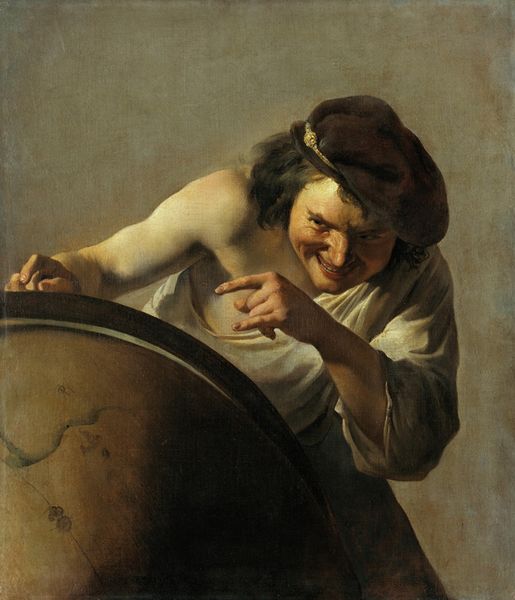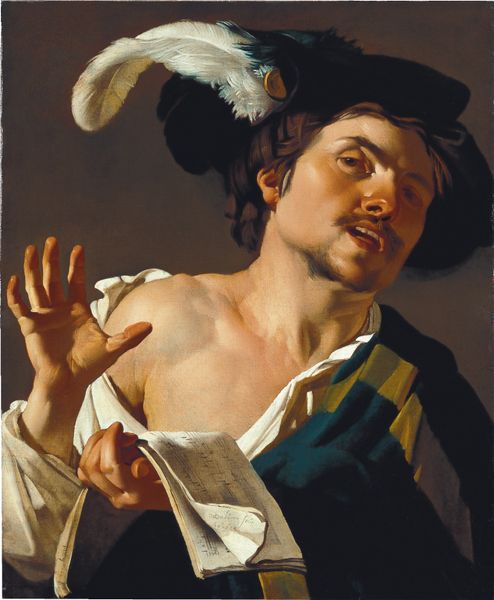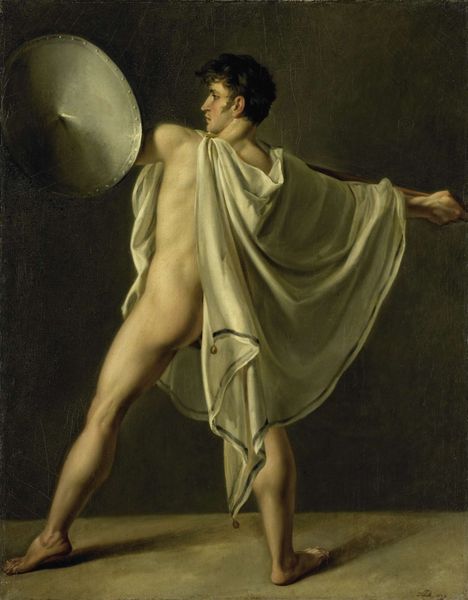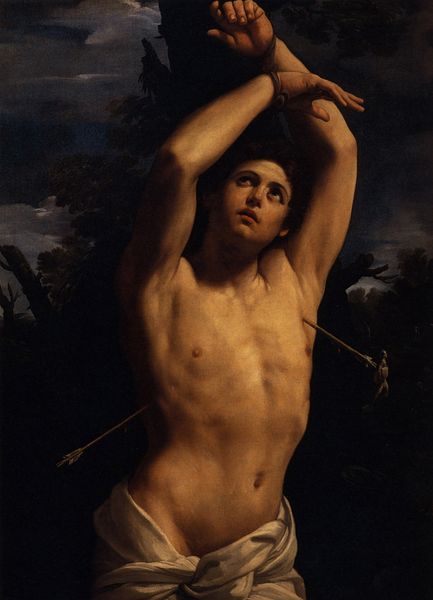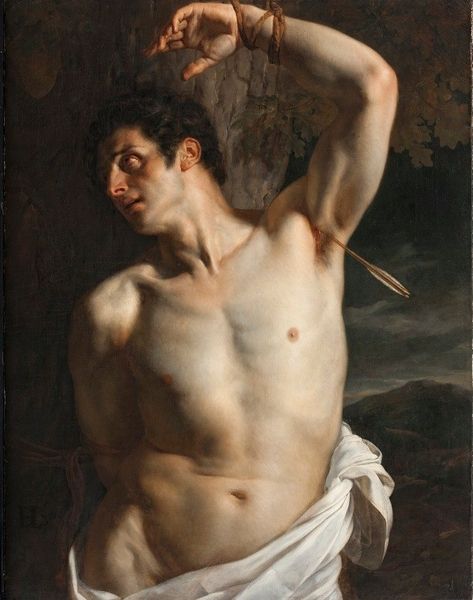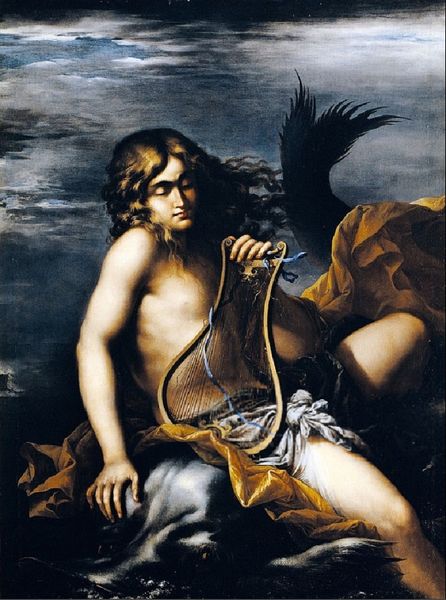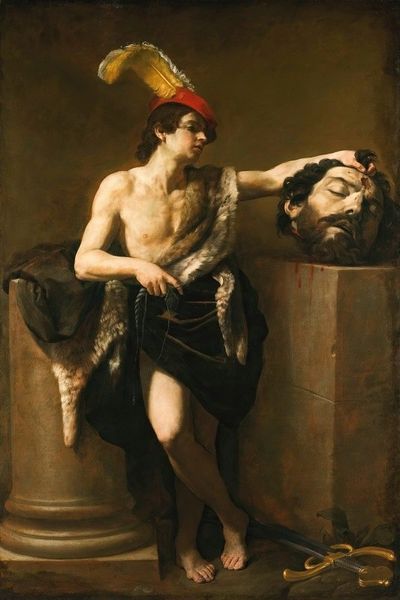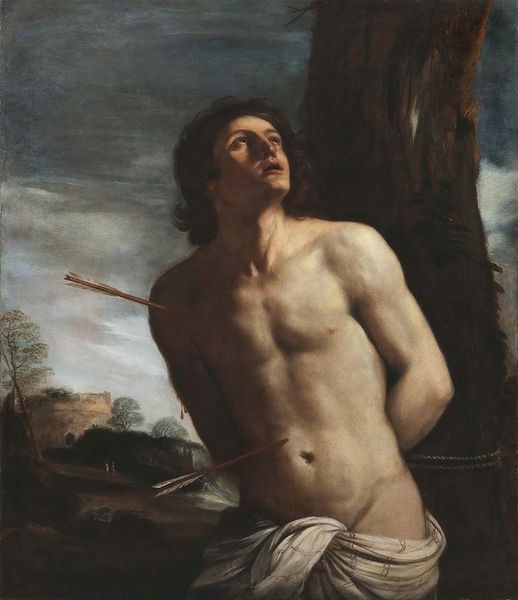
A young man holding a burning candle and a scamorza cheese, a fiasco bottle beside him
0:00
0:00
painting, oil-paint
#
portrait
#
figurative
#
baroque
#
painting
#
oil-paint
#
figuration
#
chiaroscuro
#
genre-painting
Copyright: Public Domain: Artvee
Curator: Immediately, I am drawn to the intimacy of this scene, illuminated by the singular flame of a candle. Editor: Let’s take a closer look at this evocative work. This is "A young man holding a burning candle and a scamorza cheese, a fiasco bottle beside him" by Gerard van Honthorst. The subject, caught in a moment of contemplation, holds a candle that casts a dramatic chiaroscuro across his face and torso. The cheese, dangling above, becomes strangely central. Curator: What strikes me most is how the light seems to emanate from the candle, revealing the texture of the skin, the rough weave of the fiasco bottle, even the imperfect surface of the cheese. Honthorst clearly wanted to highlight the labor involved in both the creation of the artwork and the depicted objects. Editor: Absolutely, and to push that further, it is a commentary, too, on the era's social stratification. He is not some nobleman; his modest attire speaks volumes about his socioeconomic status. He is working class; he owns the items. They do not own him. It creates such intimacy that it nearly feels like we, too, are holding a flame and waiting to share this food with him. Curator: It's fascinating how Honthorst uses everyday objects—food, drink, a simple candle—to build a complex scene, emphasizing the relationship between light, labor, and material culture. The making of cheese and wine at that time could not have been easy. What were conditions for those producers? What was access like to a product such as oil for the working class, when paintings like this were commissioned by nobles? Editor: It definitely begs the question of consumption, which is inherently social. Beyond that, look at his gaze, his very visible imperfections. He does not look away. He sees you, he engages you, he makes you a part of his private life as a common man. He asks you what role he has played in your access to comfort. The intimacy and drama encourage us to challenge notions of beauty, class, and visibility, asking, whose stories do we immortalize and why? Curator: His realism is profound; the shadows create so much more than mere imagery but the labor that went into these simple processes. Editor: The socio-political messaging really challenges us to look critically at art, access, and how art history tends to record what should and should not be. Curator: It truly opens up new narratives surrounding Dutch Golden Age paintings and the intersection of art and life! Editor: I completely agree.
Comments
No comments
Be the first to comment and join the conversation on the ultimate creative platform.
